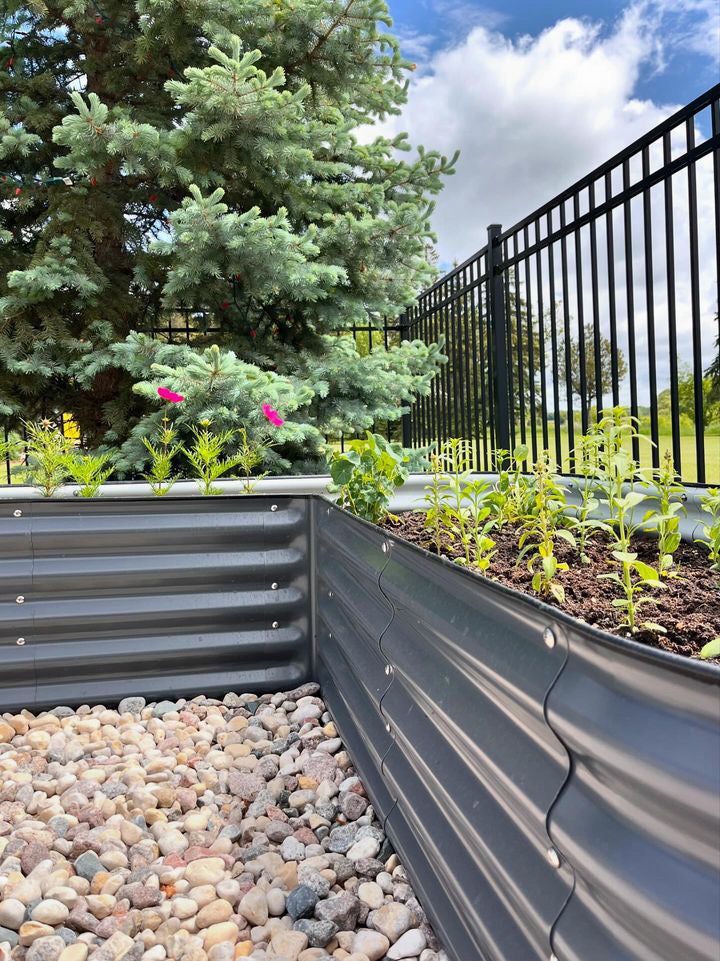Which is Better for a Raised Garden Bed: Wood or Galvanized Metal?
Gardening is not just a hobby; it's a nurturing journey that demands the right tools and conditions. One of the essential decisions gardeners face is choosing the material for their raised garden beds. Wood and galvanized metal are two popular options, each with its unique set of advantages and considerations. In this article, we will explore the pros and cons of wood and galvanized metal raised beds, helping you make an informed decision for your green space.
Wooden Raised Garden Beds: The Rustic Charm
Pros:
-
Aesthetic Appeal: Wood offers a natural, rustic charm that seamlessly integrates into most garden settings. Its warm tones add a touch of elegance to your outdoor space.
-
Insulation: Wooden beds provide excellent insulation, protecting plants from extreme temperatures. They keep the soil warm in colder months and cool in the heat, creating an optimal environment for plant growth.
-
Customization: Wood is incredibly versatile, allowing for easy customization. You can tailor the size, shape, and height of your raised beds to fit your garden layout and plant requirements.
Cons:
-
Prone to Rot: Wood is susceptible to decay, especially when exposed to moisture from watering or rain. Over time, this can lead to rot, weakening the structure of the bed and potentially introducing harmful organisms to the soil.
-
Vulnerable to Pests: Wood attracts insects, including termites and ants, which can damage the raised bed. Certain pests may also harm plant roots and overall garden health.
-
Regular Maintenance Required: To prolong the lifespan of wooden raised beds, regular maintenance is necessary, including sealing, staining, or painting to protect against moisture and pests. Maintenance efforts can be time-consuming and may incur additional costs.
-
Environmental Impact: Some wood types, particularly exotic hardwoods, may be sourced from unsustainable forestry practices. Choosing eco-friendly, sustainably sourced wood is important for environmentally conscious gardeners.
Galvanized Metal Raised Garden Beds: Modern Durability
Pros:
-
Durability: Galvanized metal is highly resistant to rust, corrosion, and weathering. This makes modular galvanized metal raised beds exceptionally durable and long-lasting, ensuring they withstand various weather conditions.
-
Easy Assembly: These beds are designed for easy assembly with interlocking components or panels, saving you time and effort during setup.
-
Customization: Available in various sizes and shapes, galvanized metal beds allow you to customize your garden layout according to your space and planting needs. You can create unique configurations or expand your garden by adding more modules.
-
Extended Growing Season: Metal absorbs and retains heat efficiently, which helps warm the soil earlier in the spring and extend the growing season into the fall. This feature is particularly beneficial for gardeners in cooler climates.
Cons:
- Heat Absorption: Metal can absorb and retain heat, which might be an advantage in cooler climates but can lead to excessively hot soil in sunny and warm regions. Overheated soil can stress plants, affecting their growth and health.
Ultimately, the choice between wood and galvanized metal raised garden beds depends on your specific needs and preferences. Consider the climate, budget, aesthetics, and maintenance requirements to make an informed decision. Both materials offer unique advantages, ensuring that your gardening experience is fruitful and visually pleasing. Happy gardening!



